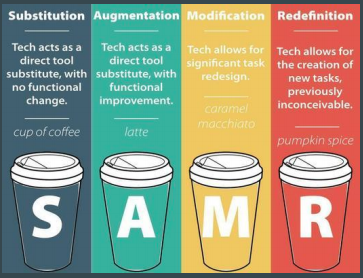At the heart of mLearning and New Media is combining the classroom with the devices and imagery that deliver to us our visual culture. There is no denying that technology and social media are a big part of our daily lives. It seems that art education presented online or combined with the mobility of certain devices like phones and tablets, can create a lot of positive outcomes, including a dynamic learning process and increased peer interaction and inspiration. The ability to linger on a certain work or works and reference the archive of commentary on it helps further a student's knowledge and creativity. Art has increased its definition beyond the traditional realms of drawing, painting and sculpture. It now includes new media like video games, digital art, movies, and more. The blurring of the lines of what makes up art has made it accessible to everyone, not just the "artist."
Although mobile learning and New Media have their positive sides, I feel at times the ease and accessibility of the Internet can be a trap. Not taking part in face-to-face connections could possibly lead to more timidness, laziness and less accountability in less self-motivated individuals. Purely online courses can also provide a sort of anonymity in participants, which may at first, feel like a comfortable layer of protection, but the tone of written comments can be misinterpreted and lead to misunderstandings and self doubt. I feel that in person interactions not only build confidence in who your peers are, but also in your own self, which is often not present in adolescents. I also feel, especially with non-photographic art such a painting and drawing, viewing a piece in real life can lend itself to a more emotion reaction and connection with the art. Viewing artwork on the screen is sort of a "watered down" version of the real thing, often obscuring size, texture, color and contrast. Perhaps a solution for the future is to have a combination of online coursework and in person interaction and viewing of artwork. That way, art educators can reap the benefits of both types of learning.
The SAMR model is a way to define how mLearning activities are changing the way we conduct our curriculum in an art classroom. The SAMR Model uses four classifications of technology:
• Substitution: The technology provides a substitute for other learning activities without functional change.
• Augmentation: The technology provides a substitute for other learning activities but with functional improvements.
• Modification: The technology allows the learning activity to be redesigned.
• Redefinition: The technology allows for the creation of tasks that could not have been done without the use of the technology.
Using the SAMR model helps give a solid reasoning behind the activities used in the art classroom, so that they are more meaningful to learning and not just utilizing technology for just the sake of using technology.


